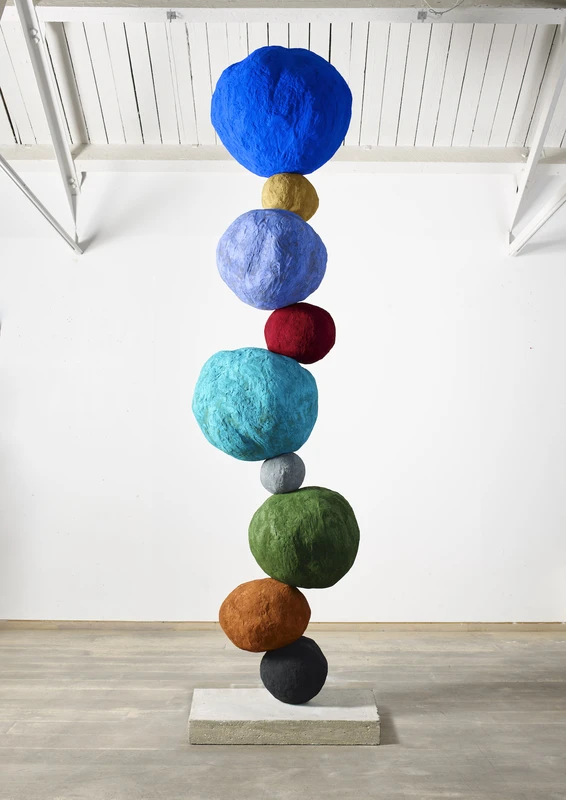Annie Morris
6 Oct-13 Nov 2021


Timothy Taylor is pleased to present a new selection of sculptures, drawings and tapestries by British artist Annie Morris (b. 1978, London, UK). The exhibition will coincide with Morris’s first solo museum exhibition in the UK, When A Happy Thing Falls at Yorkshire Sculpture Park, and her inclusion in Frieze Sculpture 2021. The exhibition will be accompanied by a fully illustrated catalogue with a newly commissioned essay by the esteemed poet and art critic Rachel Spence.
Delicately varied brushwork and rich, jewel-toned hues vibrate across the surfaces of Morris’s sculptures, drawings and tapestries, which draw from the artist’s memories, experiences and the subconscious. Colour plays an important role across her practice, linking her sculptures to her drawing and tapestry work through a shared palette in rich shades of cobalt blue, burgundy, mustard yellow and earthy green. The drawings and tapestries incorporate figurative elements in addition to abstract marks and geometric grids: images of surreal frolicking women, flowers and trees mix with geometric grids and cryptic signs in far-ranging imaginary landscapes shaped by a freewheeling approach to line and form.
The exhibition presents a selection of paired sculptures from the artist’s Stack series, each linked by form and shape into pairs. The sculptures vary in size, scale and medium, ranging from patinated bronze, to coated plaster and sand. They employ a visual lexicon that brings to mind the opposing forces of balance: fragility and strength, grief and renewal, gravity and lightness.
The Stack sculpture series began in 2012, after the artist began using the repetitive process of sculpting as a way to process her grief following a personal experience of stillbirth. The sculptures’ bulbous orbs suggest the swell of pregnancy, while their seemingly precarious alignment alludes to the vulnerability of the body. Yet despite being initially conceived in the aftermath of tragedy, the sculpture series has since evolved to encompass notions of hope, rebirth and creative power. This balance is reflected in their physical structure: transfixed in motion, the sculptures seem to defy gravity in their upward thrust. In this uneasy equilibrium between instability and grounded, they express the uncertainty of human life in the face of mortality.
Morris is heir to a tradition of self-examinations of the female body as both site and symbol of intense psychological scrutiny in contemporary sculpture, in the line of Louise Bourgeois and Barbara Hepworth. Like Bourgeois, who remained preoccupied with the female body and motherhood in both her graphic and sculpture works, ideas of pregnancy and rebirth recur throughout Morris’s drawing, sculpture and textile practice. Luminous and expressive, the resulting compositions illuminate a world dominated by chance and the subconscious.
Annie Morris Press Release
Download